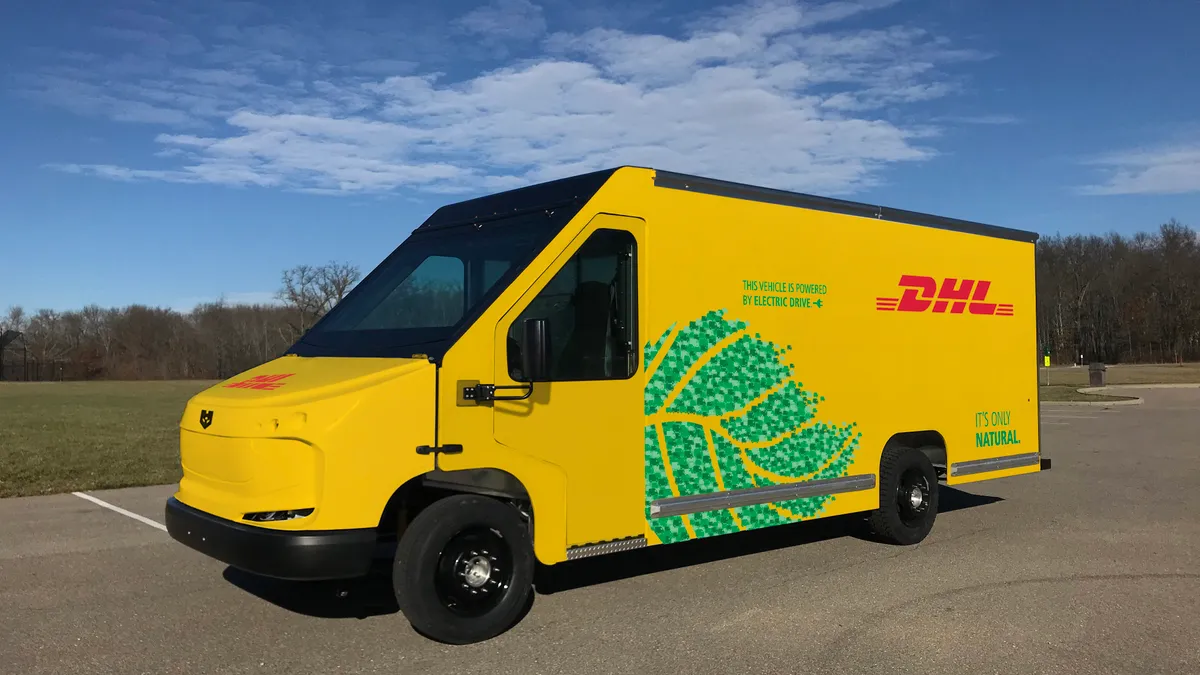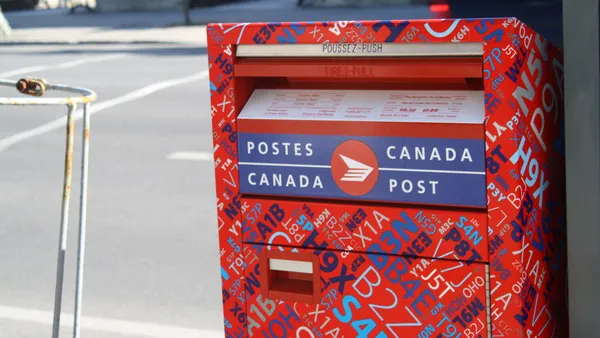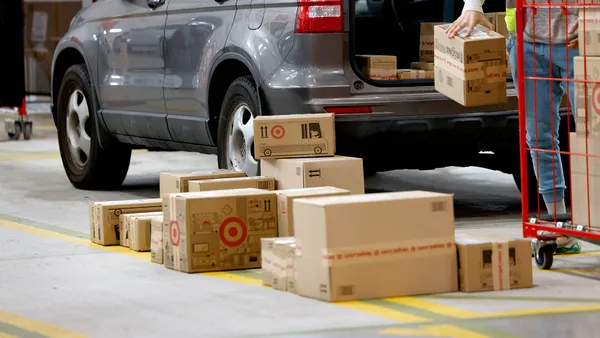UPDATE: February 5, 2019: DHL said it expects the use of EVs to save the company 63% in monthly operating cost compared to fuel vehicles.
Dive Brief:
- DHL is adding 63 electric vehicles to its delivery fleet. The NGEN cargo vans are created by Workhorse Group and are the same model UPS plans to test in Atlanta, Dallas and Los Angeles.
- "Our aim is to have at least 25% of our fleet made up of green vehicles by 2020; we are currently at around 13% (with a fleet of ~1,800 vehicles)" Robert Mintz, the senior communications manager at DHL, told Supply Chain Dive in an email.
- The U.S. Postal Service is also piloting seven new electric cargo vans in California where one vehicle is already servicing routes in Fresno, California, according to a press release from Motiv Power Systems, the company that makes the chassis for the vehicles.
Dive Insight:
The vehicles being used by DHL will have a range of 100 miles, and the company plans to install charging infrastructure where the vehicles are based. The first 30 will be deployed in the San Francisco Bay Area. The location was picked based on the vehicle's range and the city's delivery density, Mintz said.
The company said its decision to add electric vehicles is driven by its commitment to have zero logistics-related emissions by 2050. An important step in this will be having 70% of its first- and last-mile delivery done with clean transportation by 2025. And these 63 cargo vans aren't the company's first — there are others on the road, including a large EV fleet in Manhattan, Mintz said.
The adoption of electric vehicles likely isn't being done solely for the good of the planet. Electric vehicles can reduce maintenance and fuel cost. A report by the Natural Resources Defense Council estimated the annual cost savings for drivers using electric vehicles in Illinois in 2030 would be between $308 and $323. Another estimate by the Equinox Center puts the savings at about $1,136 for every 10,000 miles driven when the EV is charged at the "super off-peak" rate.
Using EVs in the logistics business may seem like a modern idea, but USPS put its first EV on the road in 1899 in Buffalo, New York. But now is the right time, economically, for these organizations to begin making the decision to move more seriously toward EVs, Jim Castelaz, CEO of Motiv Power Systems, told Fast Company.
"I think that if you look at kind of why is now maybe an inflection point for the USPS – and for other fleets in adoption of electric – it’s because battery prices are coming down so substantially and the reliability and quality is going up so quickly, thanks to passenger EV adoption," Castelaz said, according to Fast Company.
In 2012, California passed legislation to increase the number of EVs in its government fleet. The state provides resources for companies looking to do the same, offering a number of incentives, from rebates to tax breaks.















